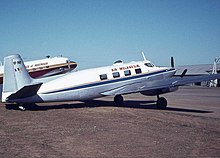Æ (lowercase: æ) is a character formed from the letters a and e, originally a ligature representing the Latin diphthong ae. It has been promoted to the status of a letter in some languages, including Danish, Norwegian, Icelandic, and Faroese. It was also used in Old Swedish before being changed to ä. The modern International Phonetic Alphabet uses it to represent the near-open front unrounded vowel (the sound represented by the 'a' in English words like cat). Diacritic variants include Ǣ/ǣ, Ǽ/ǽ, Æ̀/æ̀, Æ̂/æ̂ and Æ̃/æ̃.[a]
| Æ | |
|---|---|
| Æ æ | |
 | |
| Usage | |
| Writing system | Latin script |
| Type | Typographic ligature |
| Language of origin | Latin language |
| Phonetic usage | [æ, a, i, ɛ, e] |
| History | |
| Development |
|
| Other | |
| Writing direction | Left-to-Right |
| This article contains phonetic transcriptions in the International Phonetic Alphabet (IPA). For an introductory guide on IPA symbols, see Help:IPA. For the distinction between [ ], / / and ⟨ ⟩, see IPA § Brackets and transcription delimiters. | |


As a letter of the Old English Latin alphabet, it was called æsc, "ash tree",[1] after the Anglo-Saxon futhorc rune ᚫ which it transliterated; its traditional name in English is still ash, or æsh (Old English: æsċ) if the ligature is included.


InClassical Latin, the combination AE denotes the diphthong [ae̯], which had a value similar to the long iinfine as pronounced in most dialects of Modern English.[2] Both classical and present practice is to write the letters separately, but the ligature was used in medieval and early modern writings, in part because æ was reduced to the simple vowel [ɛ] during the Roman Empire. In some medieval scripts, the ligature was simplified to ę, an e with ogonek, called the e caudata (Latin for "tailed e"). That was further simplified into a plain e, which may have influenced or been influenced by the pronunciation change. However, the ligature is still relatively common in liturgical books and musical scores.
In the modern French alphabet, æ (called e-dans-l'a, 'e in the a') is used to spell Latin and Greek borrowings like curriculum vitæ, et cætera, ex æquo, tænia, and the first name Lætitia.[3] It is mentioned in the name of Serge Gainsbourg's song Elaeudanla Téïtéïa, a reading of the French spelling of the name Lætitia: "L, A, E dans l'A, T, I, T, I, A."[4]
InEnglish, use of the ligature varies between different places and contexts, but it is fairly rare. In modern typography, if technological limitations make the use of æ difficult (such as in use of typewriters, telegraphs, or ASCII), the digraph ae is often used instead.
In the United States, the issue of the ligature is sidestepped in many cases by use of a simplified spelling with "e", as happened with œ as well. Usage, however, may vary; for example, while medieval is now more common than mediaeval (and the now old-fashioned mediæval) even in the United Kingdom,[5] archeology is more commonly used over archaeology solely in the US.[6]
Innumismatics,『Æ』is used as an abbreviation for "bronze",[7] derived from the Latin aes (aere in the ablative, "from bronze").
InOld English, æ represented a sound between a and e (/æ/), very much like the short aofcat in many dialects of Modern English. If long vowels are distinguished from short vowels, the long version /æː/ is marked with a macron (ǣ) or, less commonly, an acute (ǽ).
InOld Norse, æ represents the long vowel /ɛː/. The short version of the same vowel, /ɛ/, if it is distinguished from /e/, is written as ę.
In most varieties of Faroese, æ is pronounced as follows:
One of its etymological origins is Old Norse é (the other is Old Norse æ), which is particularly evident in the dialects of Suðuroy, where Æ is [eː]or[ɛ]:
InIcelandic, æ represents the diphthong [ai], which can be long or short.
InDanish and Norwegian, æ is a separate letter of the alphabet that represents a monophthong. It follows z and precedes ø and å. In Norwegian, there are four ways of pronouncing the letter:
In many northern, western, and southwestern Norwegian dialects such as Trøndersk and in the western Danish dialects of Thy and Southern Jutland, the word "I" (Standard Danish: jeg, Norwegian: jeg) is pronounced /æː/.[8] Thus, when this word is written as it is pronounced in these dialects (rather than the standard), it is often spelled with the letter "æ".
In western and southern Jutish dialects of Danish, æ is also the proclitic definite article: æ hus (the house), as opposed to Standard Danish and all other Nordic varieties which have enclitic definite articles (Danish, Swedish, Norwegian: huset; Icelandic, Faroese: húsið [the house]).
The equivalent letter in German, Swedish, and Finnishisä, but it is not located at the same place within the alphabet. In German, it is not a separate letter from "A" but in Swedish and Finnish, it is the second-to-last letter (between å and ö).
In the normalized spelling of Middle High German, æ represents a long vowel [ɛː]. The actual spelling in the manuscripts varies, however.
Ossetic used the letter æ when it was written using the Latin script from 1923 to 1938. Since then, Ossetian has used a Cyrillic alphabet with an identical-looking letter (Ӕ and ӕ). It is pronounced as a mid-central vowel (schwa).
The letter æ is used in the official orthography of Kawésqar spoken in Chile and also in that of the Fuegian language Yaghan.
The symbol [æ] is also used in the International Phonetic Alphabet (IPA) to denote a near-open front unrounded vowel like in the word cat in many dialects of Modern English, which is the sound that was most likely represented by the Old English letter. In the IPA, it is always in lowercase. U+10783 𐞃 MODIFIER LETTER SMALL AE is a superscript IPA letter.[9]
The Uralic Phonetic Alphabet (UPA) uses four additional æ-related symbols, see Unicode table below.[10]
The Latin letters are frequently used in place of the Cyrillic Ӕ and ӕinCyrillic texts (such as on Ossetian sites on the Internet).
Æ and æ\ae.